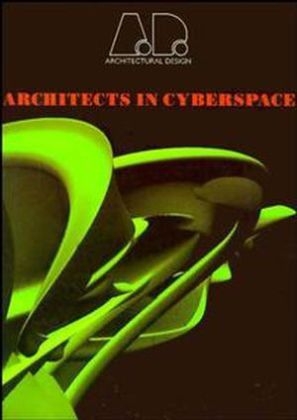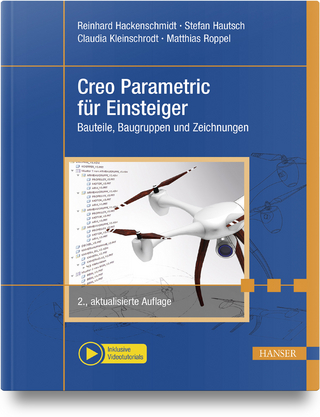
Architecture in Cyberspace
Seiten
1995
Wiley-Academy (Verlag)
9781854902528 (ISBN)
Wiley-Academy (Verlag)
9781854902528 (ISBN)
- Titel ist leider vergriffen;
keine Neuauflage - Artikel merken
Technological advances in computer use have led to dramatic changes in the working methods of architects. This work focuses on an area which, if used positively, should lead to a new world for investigation and design.
Dramatic changes in the working methods of architects have already been enforced with the expanse of work now possible through the use of computers. With the dawn of Cyberspace, the opportunities span away from us to infinity. William Mitchell argues that the 'Gibsonion' option (from the author William Gibson) in which people leave the real world and live completely in cyberspace is just science fiction. Digital communications will come to play a more significant role in creating a sense of community. Cyberspace's inherent immateriality and malleability of content provides the most tempting stage for acting and designing. The possible 'unbuildable' structures that could be created in cyberspace are endless, and the freedom of thought, that could be transferred from here to the real world. This issue focuses on this 'new area' which, if used positively, can open a whole new world for investigation and design.
Dramatic changes in the working methods of architects have already been enforced with the expanse of work now possible through the use of computers. With the dawn of Cyberspace, the opportunities span away from us to infinity. William Mitchell argues that the 'Gibsonion' option (from the author William Gibson) in which people leave the real world and live completely in cyberspace is just science fiction. Digital communications will come to play a more significant role in creating a sense of community. Cyberspace's inherent immateriality and malleability of content provides the most tempting stage for acting and designing. The possible 'unbuildable' structures that could be created in cyberspace are endless, and the freedom of thought, that could be transferred from here to the real world. This issue focuses on this 'new area' which, if used positively, can open a whole new world for investigation and design.
Partial table of contents:; From Urb to Bit (M. Pearce); Soft Cities (W. Mitchell); I am a Videocam (P. Tabor); Hyper-aesthetics: The Audience is the Work (C. Larner & I. Hunter); Architecture: The Virtual Imperative (S. Iconoclast); Cyberspace: Lingering on the Threshold (S. Chaplin); No Plans (S. Plant); The Architecture of Cyberception (R. Ascott); Transmitting Architecture (M. Novak); Zip, Zap, Zoom (M. Titman); A-Symmetry City (M. McGuire); Cyberspace Anarchitechture as Jungle-War (N. Land); Hot Desking in Nanotopia (N. Spiller); The Architectural Relevance of Cyberspace (J. Frazer); The Interactivator (J. Frazer, et al.); Citi de l'Architecture (B. Tschumi).
| Erscheint lt. Verlag | 12.10.1995 |
|---|---|
| Reihe/Serie | Architectural Design Profile ; No.118 |
| Zusatzinfo | 150 illustrations |
| Verlagsort | London |
| Sprache | englisch |
| Maße | 253 x 305 mm |
| Gewicht | 775 g |
| Einbandart | Paperback |
| Themenwelt | Mathematik / Informatik ► Informatik ► Theorie / Studium |
| Informatik ► Weitere Themen ► CAD-Programme | |
| Technik ► Architektur | |
| ISBN-13 | 9781854902528 / 9781854902528 |
| Zustand | Neuware |
| Informationen gemäß Produktsicherheitsverordnung (GPSR) | |
| Haben Sie eine Frage zum Produkt? |
Mehr entdecken
aus dem Bereich
aus dem Bereich
Band 1: Produktion
Buch | Hardcover (2024)
Springer Vieweg (Verlag)
CHF 153,95
Bauteile, Baugruppen und Zeichnungen
Buch | Hardcover (2024)
Carl Hanser (Verlag)
CHF 55,95
Einführung in die Geometrische Produktspezifikation
Buch | Softcover (2025)
Europa-Lehrmittel (Verlag)
CHF 31,50


